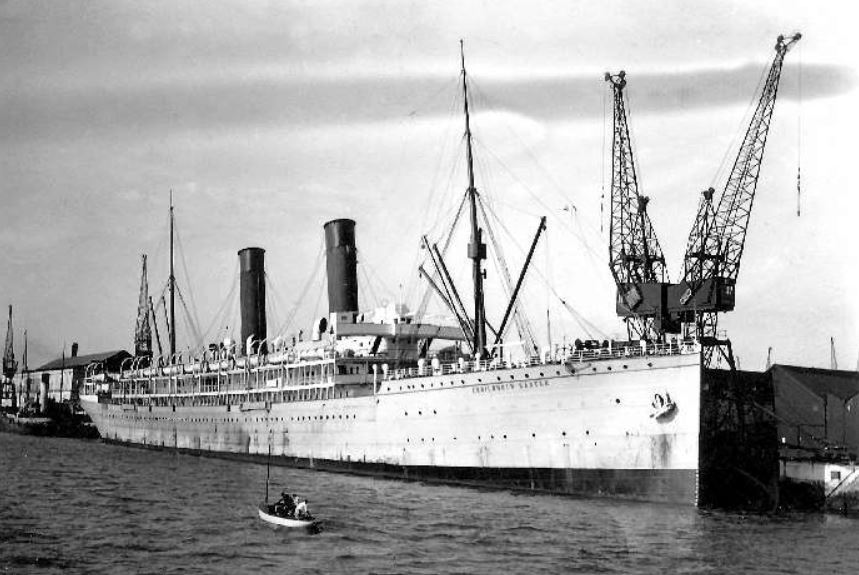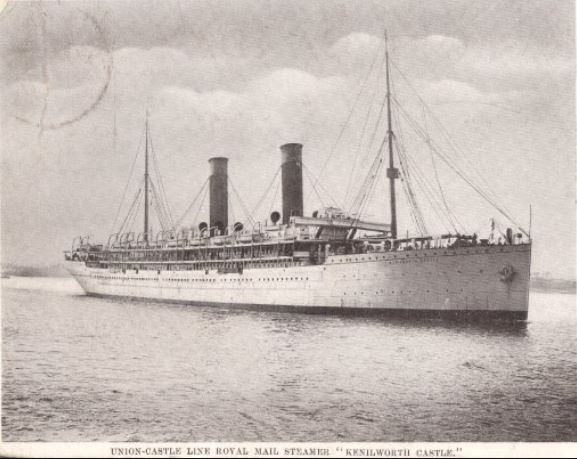Difference between revisions of "SS Kenilworth Castle"
From Our Contribution
| Line 36: | Line 36: | ||
| − | In 1919 she returned to the mail service to Africa | + | In 1919 she returned to the mail service to Africa and in the same year she was quarantined at Table Bay for three weeks during an influenza epidemic which was raging through South Africa. In 1934 her Second Class accommodation was removed and two years later she was sold for scrap. |
==Soldiers carried== | ==Soldiers carried== | ||
Revision as of 23:31, 2 December 2021
Remarks
Built to carry 255 first class passengers, 269 second class, and 270 third class. Upon delivery to Union-Castle in May 1904 she was placed on the line's mail service between Southampton and Cape Town. Requisitioned in 1914 as a troop ship, sometimes used as a hospital ship. During 1918 she made one journey to AUstralia repatriating troops.
On 4 Jun 1918 off Plymouth she collided with a British destroyer HMS Rival while zig-zagging. In that collision, live depth charges released from H.M.S. Rival exploded under Kenilworth Castle's stern. 15 crew members were drowned and the ship was badly damaged. She safely made it into Plymouth where she then sank on a mud bank.
In 1919 she returned to the mail service to Africa and in the same year she was quarantined at Table Bay for three weeks during an influenza epidemic which was raging through South Africa. In 1934 her Second Class accommodation was removed and two years later she was sold for scrap.
Soldiers carried
Southampton to Durban 12 March - 23 April 1918
Sailed on 18 March 1918. In Durban the returning soldiers transferred to the SS Field Marshall for the voyage to Fremantle.

